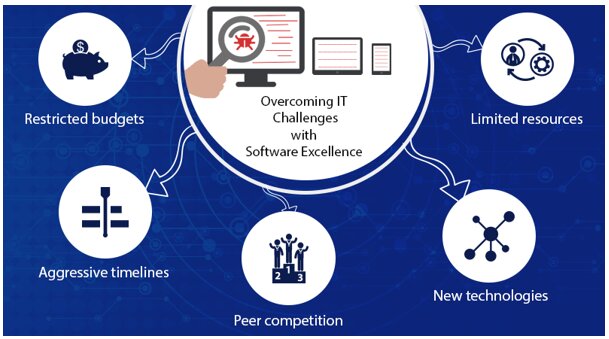Software testing is a critical process in software development that ensures the final product is free of defects and meets user expectations. It involves evaluating a system or application against specified requirements to identify bugs and errors. By systematically executing test cases, software testing helps developers improve software quality, reliability, and performance.
Software testing and types refer to the process of evaluating software to ensure it functions correctly. Key types include manual and automated testing, functional and non-functional testing, unit testing, integration testing, and performance testing.
Quality assurance is a vital component of the software development lifecycle (SDLC). Without proper testing, software applications may contain vulnerabilities that can lead to performance issues, security breaches, and system failures. Therefore, organizations invest in software testing to enhance user experience, reduce risks, and maintain a competitive edge in the market.
Importance of Software Testing!
Software testing is very important for making sure that applications work well and have high quality. It helps find mistakes, improves how the software runs, and makes it more secure. If software is not tested properly, it might have serious problems, such as not working correctly, security risks, or making the user experience bad.

When software has issues, it can cause a lot of trouble for both users and companies. That is why businesses spend time and money on software testing to lower risks, keep their software reliable, and make sure customers are happy with their products. Testing plays a big role in preventing problems before they reach users, which helps companies maintain a good reputation and avoid costly mistakes.
There are different types of testing that help developers create strong and mistake-free software. Some tests check if the software does what it is supposed to do, while others make sure it can handle heavy use without slowing down or crashing. Security tests help protect user data from hackers, while performance tests ensure the software runs smoothly on different devices.
Read: What Is A Good Utility Software – Discover The Best Tools To Optimize Your System!
Types of Software Testing!
Functional and non-functional testing are the two main categories into which software testing falls. Each category serves a different purpose, ensuring various aspects of the software are tested comprehensively.
1. Functional Testing:
Functional testing focuses on verifying that the software functions correctly according to the specified requirements. This type of testing ensures that all features and functionalities work as intended.
- Unit Testing:
The technique of testing separate software program modules or components is known as unit testing. It is usually performed by developers during the coding phase to detect early-stage bugs.
- Integration Testing:
Integration testing ensures that multiple modules work together as expected. It verifies data flow between components and helps identify issues related to interactions between different parts of the software.
- System Testing:
System testing assesses the entire system in its entirety. It verifies that all components work together within the intended environment and meet business requirements.
- Acceptance Testing:
Acceptance testing is performed to determine whether the software meets end-user requirements. It is usually conducted by clients or stakeholders before the software goes live.
2. Non-Functional Testing:
Non-functional testing focuses on performance, security, usability, and compatibility aspects of the software.
- Performance Testing:
Performance testing assesses the speed, scalability, and stability of the software under different conditions. Load, stress, and endurance tests are all included.
- Security Testing:
Security testing identifies vulnerabilities and ensures that the software is protected against cyber threats. This type of testing is essential for applications handling sensitive user data.
- Usability Testing:
Usability testing evaluates how easy and intuitive the software is for end-users. It helps improve the overall user experience by identifying design and navigation issues.
- Compatibility Testing:
Compatibility testing ensures that the software works correctly across various devices, browsers, and operating systems.
Challenges in Software Testing!
Despite its importance, software testing and types come with various challenges. One major challenge is time constraints, as thorough testing requires significant time and resources. Additionally, complex software applications make it difficult to identify all possible defects.

Compatibility issues across different devices, browsers, and operating systems also pose challenges. Moreover, maintaining test cases and ensuring they remain relevant as software evolves is another difficulty. Overcoming these challenges requires a strategic approach, automation tools, and continuous testing practices.
Best Practices in Software Testing!
1. Implementing Automated Testing
One of the most effective approaches in software testing and types is implementing automation. Automated testing helps save time, reduce human errors, and improve efficiency. It is especially useful for repetitive tasks, regression testing, and performance evaluation. Using tools like Selenium, JUnit, or TestNG, testers can execute scripts quickly and get accurate results.
2. Continuous Testing and Integration:
Continuous testing is essential in modern software development, especially with agile and DevOps methodologies. It involves testing software at every stage of development, ensuring early detection of bugs. Continuous integration (CI) tools like Jenkins and GitLab help automate testing, allowing teams to identify issues before they reach production.
Read: How Much Did Gartner Buy Software Advice For – Dive Into The Details Of This Major Acquisition!
FAQs:
1. What is the primary purpose of software testing?
Software testing ensures that an application functions correctly, is free of defects, and meets user expectations.
2. What are the major types of software testing?
The two main categories are functional testing (e.g., unit testing, system testing) and non-functional testing (e.g., performance testing, security testing).
3. How does automation improve software testing?
Automated testing speeds up the testing process, increases accuracy, and reduces manual effort, making it ideal for repetitive test cases.
4. What are the best tools for software testing?
Popular tools include Selenium, JMeter, TestComplete, LoadRunner, and Appium.
5. What are the latest trends in software testing?
AI-driven testing, shift-left testing, and cloud-based testing are among the latest innovations improving the software testing landscape.
Conclusion:
Software testing is an indispensable part of the development process, ensuring the quality, security, and performance of software applications. By implementing various testing types, organizations can minimize bugs, enhance user satisfaction, and maintain software reliability. As technology evolves, software testing continues to advance, incorporating automation, AI-driven testing, and cloud-based solutions to streamline the process.
Also Read:
- What Is The Better Broadcast Software – Discover The Top Options, Compare Features, And Start Streaming Today!
- Un43j5202afxza How To Update Software – A Complete Guide!
- Como Desinstalar Software Windows Are Completo En Windows 11 – How To Completely Uninstall Software!
- Where Does Sfhp Software Development Office – Discover Its Location, Services, And How It Powers Healthcare Solutions!
- What Are Two Disadvantages To Buying Antivirus Software – Protect Your Device Wisely!










